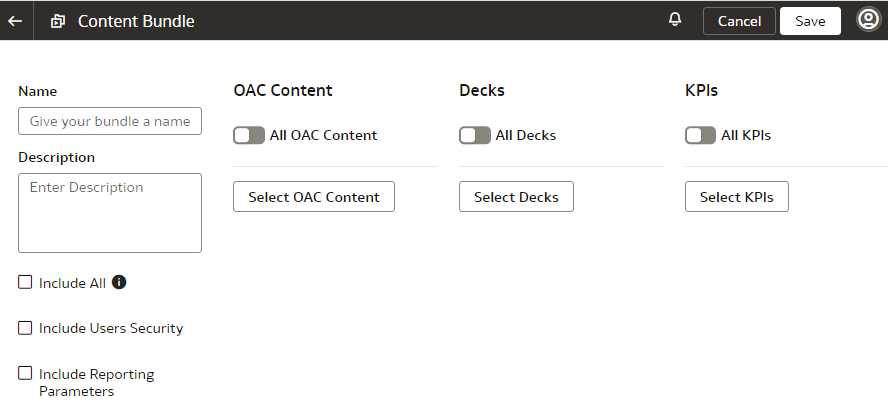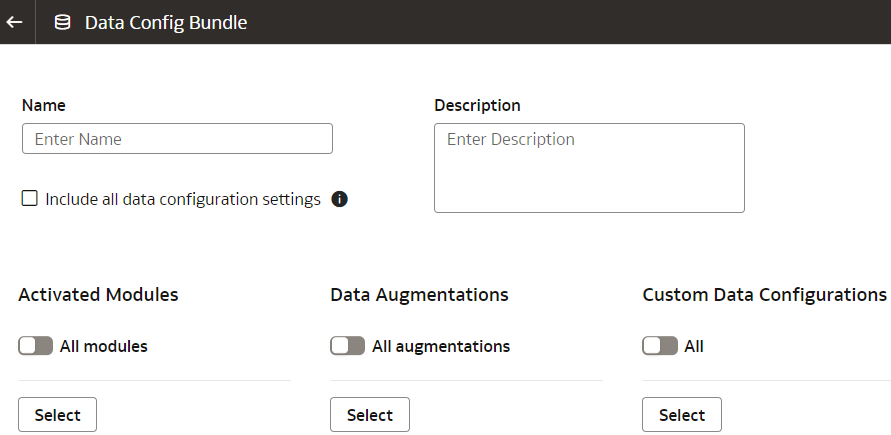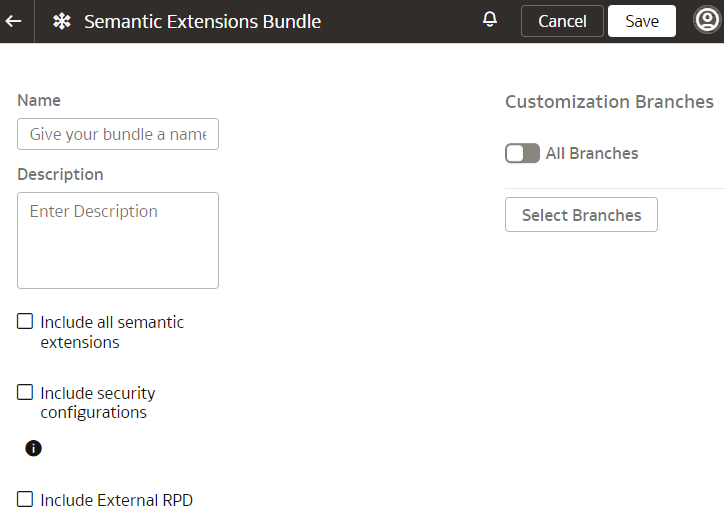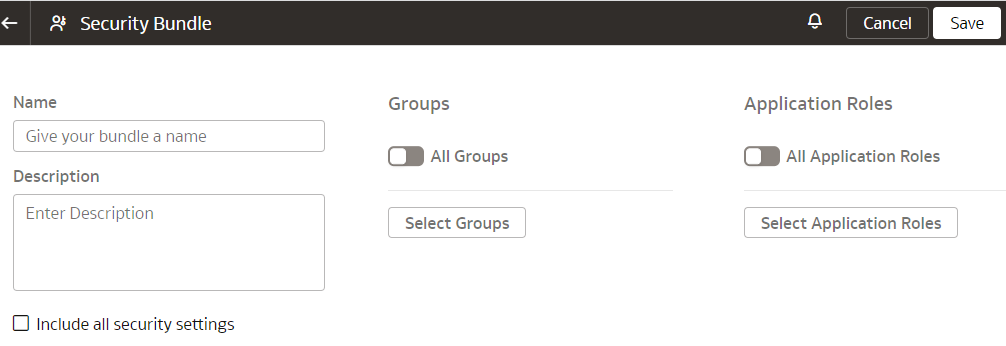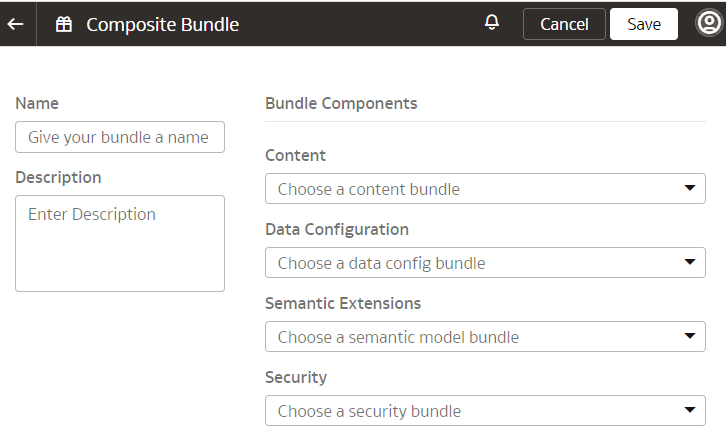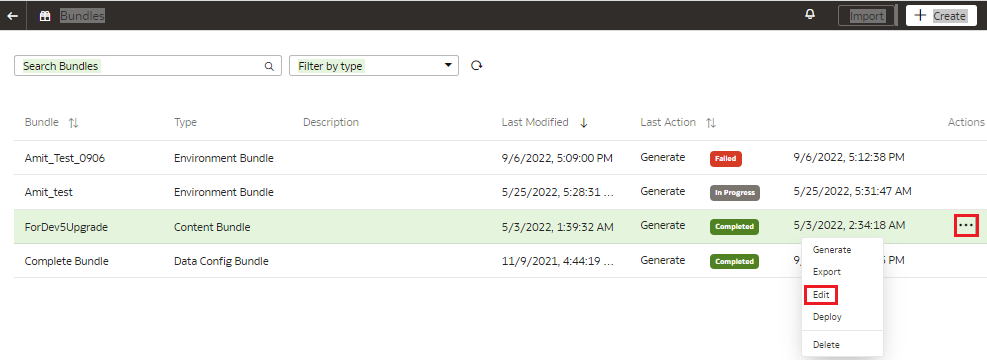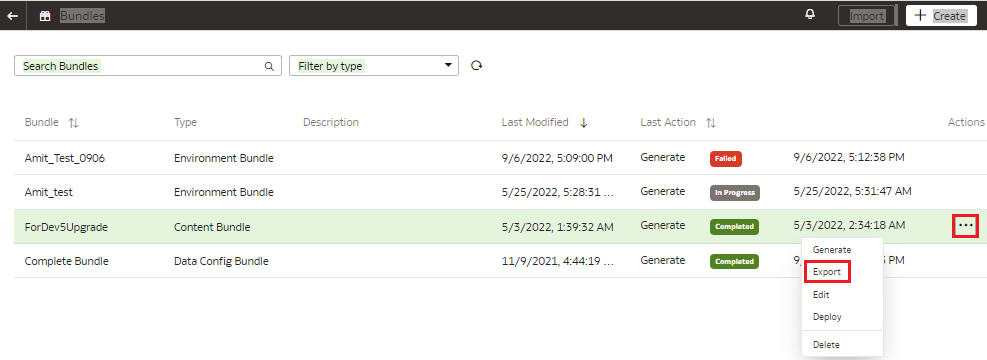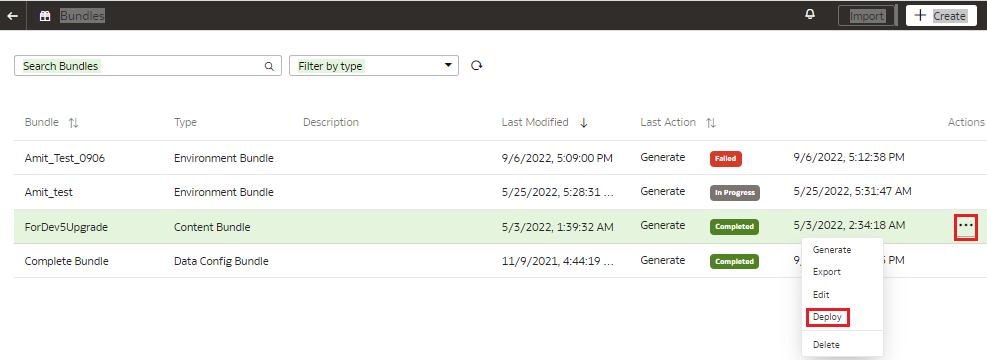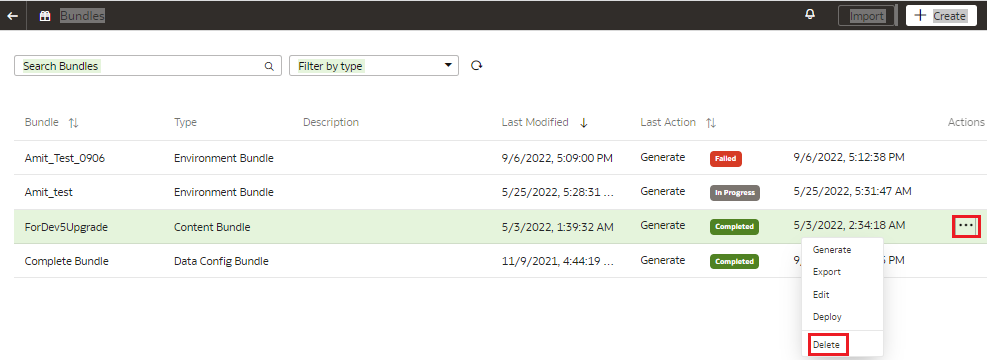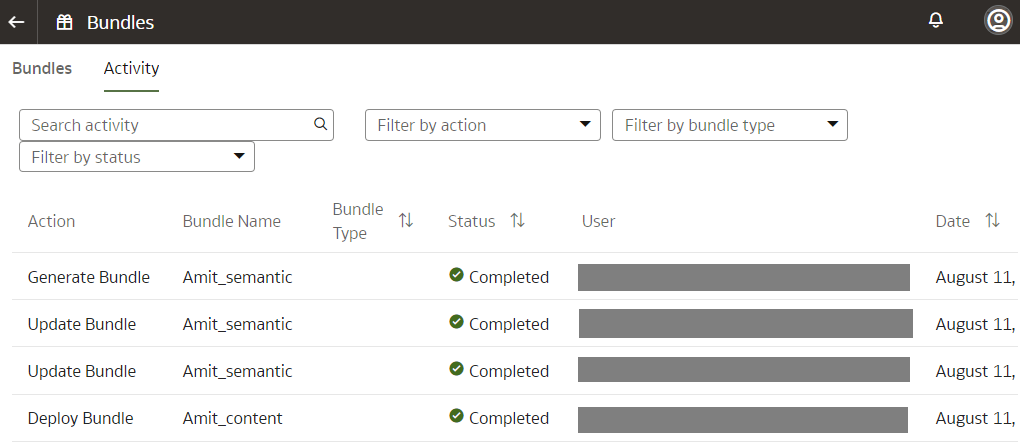Bundle Your Application Artifacts
As a service administrator, you can manage snapshots of your application artifacts as bundles.
![]() LiveLabs Sprint: How do I create and deploy security bundles in FAW?
LiveLabs Sprint: How do I create and deploy security bundles in FAW?
![]() LiveLabs Sprint: How do I generate content bundles in Fusion Analytics Warehouse (FAW)?
LiveLabs Sprint: How do I generate content bundles in Fusion Analytics Warehouse (FAW)?
![]() LiveLabs Sprint: How do I create and deploy semantic model bundles in FAW?
LiveLabs Sprint: How do I create and deploy semantic model bundles in FAW?
![]() LiveLabs Sprint: How do I migrate KPIs from test to production in Fusion Analytics Warehouse?
LiveLabs Sprint: How do I migrate KPIs from test to production in Fusion Analytics Warehouse?
About Bundles
Bundles are snapshots of your application artifacts such as configurations and customizations at a certain point in time.
Bundles work on environments where the source and target are at the same level or the source is at a lower version and the target is at a higher version. For example, a bundle generated from a previous content version works on the latest content version.
- Package custom development by defining a bundle that represents a subset of application artifacts in an environment such as development, test, or production.
- Migrate custom development and deploy the bundle on a target environment.
- Synchronize instances by promoting changes from one environment to another such as production to test.
- Restore the system when something goes wrong with an environment and you need to do a complete system restore.
- Create a backup of the environment or subset of application to save current state of the artifacts.
- Restore artifacts by importing from a bundle to restore state of the relevant artifacts to what was in the bundle.
You can bundle your application artifacts as:
- Data Config bundle: This includes pipeline parameters, activation metadata, data augmentations, and custom data configurations. You can install this bundle in an existing environment after a hard data reset. This is useful to leave content as-is and reset the data pipeline.
- Semantic Model bundle: This includes main branch, tags, custom branch, duty and data roles for semantic extension.
- Security bundle: This includes custom groups, custom application roles, and custom security.
- Content bundle: This includes snapshots of Oracle Analytics Cloud folders, projects, dataset definitions, KPIs, decks, duty roles for content, and report parameters. The content bundle always merges the catalog content from source to target. While merging, if any conflicts are found, it replaces the content. It doesn't track the deleted content.
- Composite bundle: This includes one or more of the other bundles.
- Environment bundle: This includes all artifacts of a specific environment to revert to a known state of system. For example, at the end of every week, the service administrator can create a bundle called DevEnv_YYMMDD to maintain a backup of the environment. You must first deploy the data configuration bundle or manually activate your data pipelines before deploying the environment bundle.
Note:
Ensure that you've activated the functional areas and data is available prior to working with the semantic models or content. Either manually configure and activate your data pipelines in the target environment, or deploy a Data Config bundle to ensure that configurations and activations are at the same level as the source environment. Only then, it makes sense to deploy an Environment bundle, Semantic bundle, or Composite bundle since they depend on data.Create a Bundle
Create a snapshot of your application artifacts to save their current state. You can view the bundles that you created on the Bundles page.
Publish a Bundle
Publish a bundle from the source environment. This action generates a snapshot of the application artifacts and saves the snapshot to a repository. You can download this bundled artifact and take to different instances.
Export a Bundle
Export the bundle .aab file from your source system to a repository or your local machine.
Import a Bundle
Import the bundle .aab file into the target environment from your computer to restore the state of the application to the checkpoint represented by the bundle.
Deploy a Bundle
You can deploy a generated bundle in the target environment to revert to state of artifacts represented by the bundle. Oracle Fusion Analytics Warehouse validates the bundle before attempting any deployment to ensure software and model versions and any other dependencies are met.
Delete a Bundle
Delete a bundle if you no longer require the snapshot of your application artifacts captured in the bundle.
View Activity History of Bundles
View all the bundles-related activities to understand the changes made to your instance, which bundles to use, and whether the existing bundles are still current. This information enables you to make informed decisions about creating updated bundles or deploying an existing bundle.

